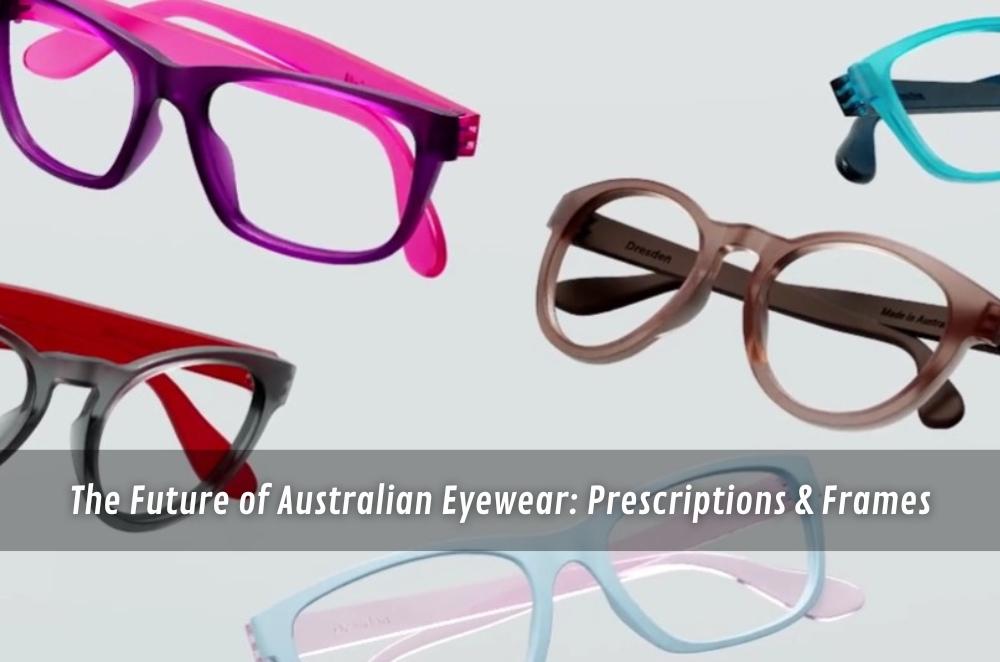The Future of Australian Eyewear: Prescriptions & Frames

If you’ve ever stared at a wall of frames and felt strangely undecided, you’re not alone. The next wave of eyewear in Australia won’t be flashy; it’ll be practical—lighter materials, cleaner lenses, and fittings that simply feel right. This guide maps what’s changing, how to choose with confidence, and where to focus your attention so your next pair works harder and gets out of the way. If you want a sense of the current landscape while you read, browsing options for prescription glasses in Australia can help you notice the small details—hinges, bridge shapes, and lens finishes—that matter day to day. No hard sell here; just a calm look at what’s improving and how to make those improvements work for your lifestyle.
What’s changing in prescriptions and frames
The headline: refinement. You’ll see fewer gimmicks and more small upgrades that stack up to comfort.
-
Slimmer, lighter chassis in durable polymers and titanium that distribute weight more evenly.
-
Coatings designed to resist smudges and micro-scratches, so cleaning becomes a quick wipe rather than a ritual.
-
Subtle geometry shifts—bridge widths, temple lengths, pantoscopic tilt—that bring lenses into your natural line of sight.
-
Modular parts in some systems (pads, arms, hinges) so minor knocks don’t retire a favourite pair.
In a wet week in Melbourne, I swapped an older acetate frame for a thin titanium set with adjustable pads. Same prescription on paper, wildly different feel on the face—no 3pm slip, no red marks at the bridge, and noticeably less glare under office lights thanks to a better AR layer.
Digital testing and fittings are getting smarter
Eye care is leaning into data and convenience. That doesn’t replace a clinician; it supports them.
-
Pre-appointment screening tools help surface issues early, so the in-store time focuses on what matters.
-
Digital phoropters and wavefront mapping reduce the “is one better than 2?” fatigue and lead to repeatable results.
-
Optical scans inform frame selection—bridge shape and pad placement—before you commit.
-
Follow-ups for minor comfort tweaks can often be handled quickly, saving another round trip.
I ran a hybrid appointment recently—history and screening online the night before, then a short in-store session for refraction and a quick retinal check. The end result was a script that felt “dialled in” from day one, with a five-minute nose-pad tweak at pickup to finish the job.
Routine care that keeps you on track
Your lenses can only do their best if the eyes behind them are healthy. Regular checks help you adjust before small issues turn into daily strain.
-
Treat dryness and irritation as signals, not background noise; minor improvements to habits can make long days easier.
-
Keep cleaning simple: a gentle solution, a soft cloth, and no harsh wipes that grind debris into the surface.
-
If your work shifts between screens and outdoor glare, consider purpose-built pairs rather than forcing one set to do everything.
Staying on top of eye care in Australia is easier when you understand how services fit together—routine exams with an optometrist, referrals for specialist care, and community health resources all play their part in maintaining clear, comfortable vision.
Outdoor clarity and glare control
Australia’s light can be dazzling—beautiful, but fatiguing. Managing reflected light makes a bigger difference than most people expect.
-
Polarisation filters cut horizontally reflected glare from water, road surfaces, and glass, sharpening contrast without harsh tints.
-
Lens tints and base curves influence comfort and field of view; aim for a balance that suits your usual environment.
-
Frame wrap matters outdoors; modest curvature can reduce stray light without compromising optical integrity.
-
Don’t underestimate secure fit—temples, nose pads, and slight tilt adjustments reduce micro-movement that blurs vision on the move.
For drivers, cyclists, and anyone spending long hours by the coast, understanding polarised sunglasses benefits helps explain why certain lenses feel instantly calmer on the eyes and why they’re becoming a standard choice for harsh Australian glare.
Choosing materials and lenses with intent
The best pair is usually the one you forget you’re wearing. That often comes down to thoughtful choices rather than chasing novelty.
-
Titanium and medical-grade polymers are reliable for all-day comfort and minimal skin irritation.
-
Consider lens index and edge profile relative to your frame size to keep weight and thickness sensible.
-
An anti-reflective stack with a durable hard coat and a clean-sheen top layer tends to pay off in fewer wipes and fewer fine marks.
-
Small geometry changes—pad width, temple tip angle—can turn a “fine” pair into a “set and forget” pair.
Anyone weighing up different frame shapes or coatings will find it useful to understand what to know about prescription glasses, since that perspective covers everyday considerations like lens categories, durability, and how frame design interacts with comfort.

Everyday habits that extend comfort
Frames and lenses do a lot of work, but habits fill the gaps. A few simple routines keep things feeling crisp.
-
Adopt a quick end-of-day rinse to dislodge grit before wiping; it’s kinder to coatings over time.
-
Use short “distance resets” if your tasks are up close—look across the room and blink fully for a few seconds.
-
Keep a case handy; even a sturdy frame will scuff if tossed loose in a bag with keys.
-
Book a minor fit check after a couple of weeks; faces aren’t static, and a small nose-pad or temple tweak can settle things.
Final thoughts
Eyewear is moving toward quiet reliability: lighter frames, better-behaved coatings, smarter fittings, and outdoor options that tame glare without fuss. Start with a fresh look at how and where you use your eyes most, match materials and geometry to that reality, and keep maintenance simple. When a pair is chosen with intent, it disappears into the day—until someone notices the shape suits you and wonders why their own glasses never feel quite that easy.






